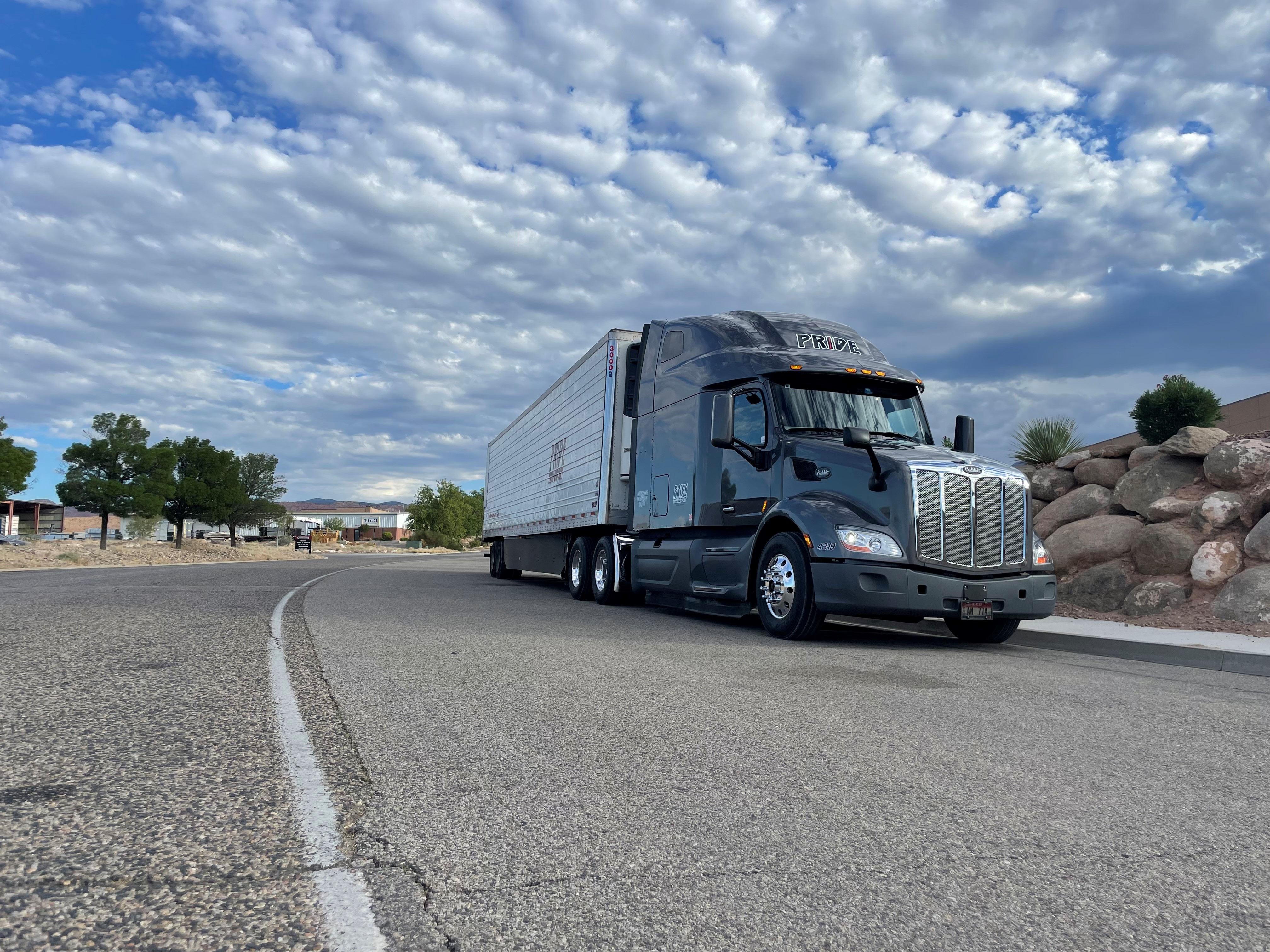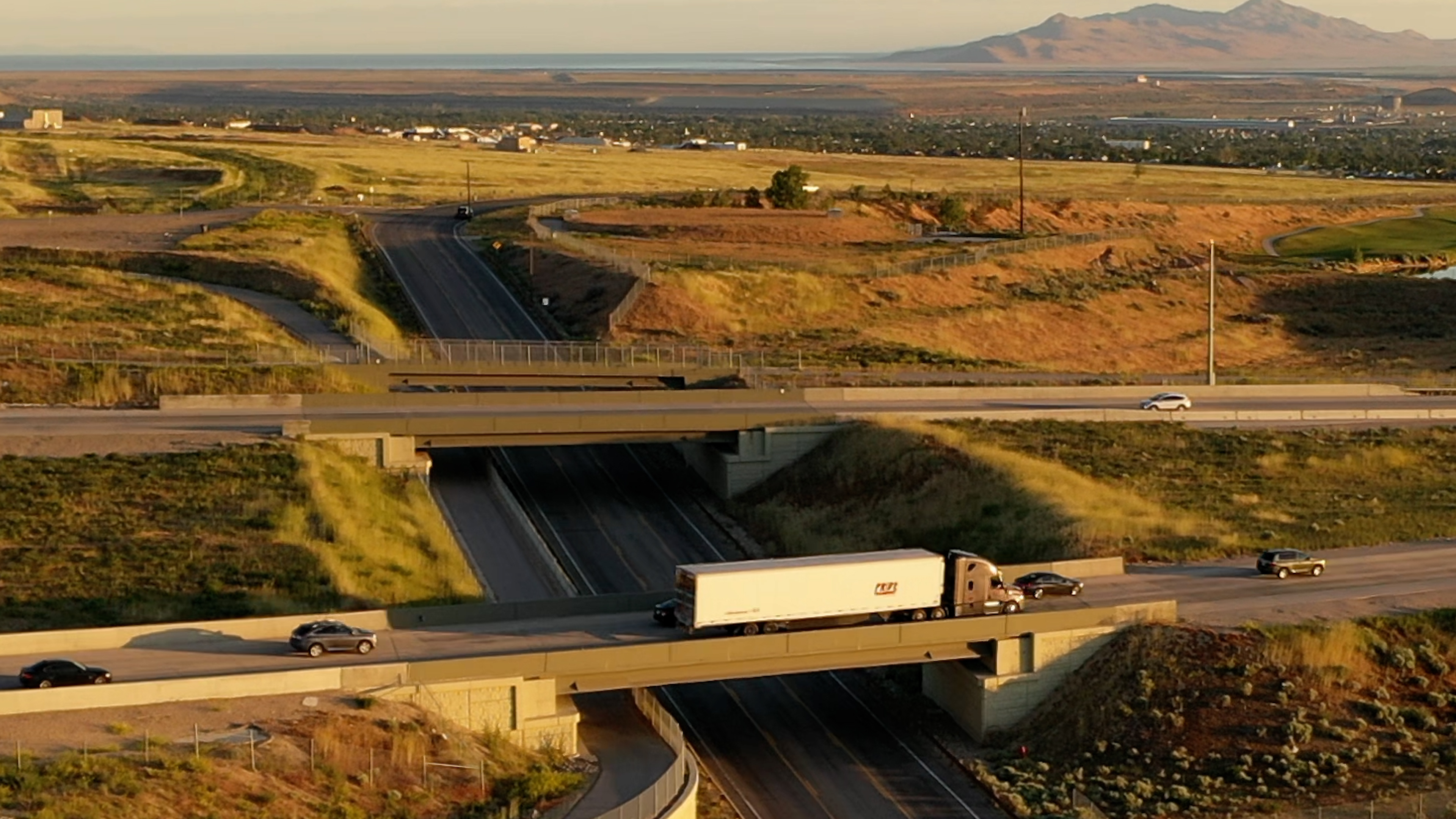by Pride Transport | Mar 14, 2024
Controlled braking is one method of slowing and stopping a large truck. With controlled braking, you press down on the brake as hard as you can without locking the wheels. Via this method of braking, you maintain control and maneuverability without a heightened risk of skidding or sliding.
Knowing different kinds of braking techniques helps you become a better driver. Here are the basics of controlled braking and what you should know about using it when you drive.
The Basics of Controlled Braking
Controlled braking is a technique of pressing down on the brakes as firmly as possible without locking the wheels. Controlled braking is used when you need to keep your vehicle in a straight line but also have to stop or slow down quickly. With this kind of braking, you apply regular, consistent pressure to the brakes but don’t slam on them.
Controlled braking is different from traditional braking methods because it doesn’t lock the wheels on your truck. It also doesn’t use controlled pressure, such as you would apply during a typical stop.
The best time to use emergency controlled braking is when you need to slow down or stop quickly but have some time to do so safely. The anti-lock braking system (ABS) kicks in and prevents the wheels from locking and skidding, allowing you to continue maneuvering the vehicle despite slowing down rapidly. Since the brakes don’t lock up the wheels, controlled braking enhances maneuverability and vehicle stability when you’re attempting to make a quick change in speed.
What to Know About Stopping Distances
When you use controlled braking, an important note is that it does increase stopping distance. Controlled braking is an option when you need to stop quickly, but it’s not the fastest option.
Emergency braking is the fastest method of stopping, as it locks the wheels. However, it’s more likely to lead to instability of your vehicle, which can become dangerous. Controlled braking is faster than normal braking, though, because normal braking uses controlled pressure rather than a full brake.
To implement controlled braking:
- Press down on the brake pedal as hard as you can
- Minimize steering wheel movements
- Listen for the ABS to kick in
- Release the brake pedal and reapply pressure immediately if the wheels lock
Several scenarios might require controlled braking, but one of the most common is when you’re taking your vehicle down a steep grade. You’ll want to have your brakes fully engaged but avoid locking your wheels to maintain maneuverability.
Controlled Braking CDL Test Questions
When you apply for your commercial driver's license, you will need to pass a knowledge test. The knowledge test is going to have questions about controlled braking, so you must understand what controlled braking is and its importance.
Some common test questions include:
- What is true about controlled braking? Answer: It’s used to keep a vehicle in a straight line as it stops.
- To use the controlled braking method, what should you do? Answer: Apply your brakes as hard as you can without locking up the wheels.
- What does controlled braking mean? Answer: Pressing down on the brakes firmly without locking the wheels.
You are also likely to be asked about topics such as appropriate braking distances, how to perform emergency maneuvers, and the best braking techniques in different scenarios.
To answer questions about controlled braking, ensure you have a basic understanding of what controlled braking is and how it affects your vehicle compared to other types of braking, such as stab braking.
The Role of Technology in Controlled Braking
Technology has made great leaps, and as a result, driving a large vehicle is safer than ever. Active brake systems, for example, have electronic sensors and controls to enhance both performance and safety. An anti-lock braking system (ABS) helps keep you in control when stopping quickly, and electronic stability control (ESC) helps adjust your engine’s throttle and wheels’ brakes to ensure you don’t skid or slide when you’re required to make a sudden or sharp maneuver.
All of these systems work together to keep your vehicle controlled even when you need to stop suddenly or need to rely heavily on your brakes. For instance, if you’re traveling down a steep grade, your anti-lock braking system will ensure you can still maneuver and don’t have locked wheels that will skid or slide. If your wheels lock up accidentally and you start to lose control? That’s when your ESC system kicks in and begins adjusting your brakes and throttle to bring the vehicle back under control.
These systems keep you in control of your vehicle in all kinds of conditions ranging from sudden stops to sliding on slick pavement.
Top Tips for Using Controlled Braking
No matter what the circumstances are, maintaining control of your vehicle comes first. You need to emphasize safety, take the time to learn the rules of the road, and get education on how to slow or stop correctly in different scenarios.
Getting training on controlled braking can help you add one more vital driving skill to your repertoire while also ensuring you can slow down and stop safely even in harsh conditions and environments. But controlled braking can only work if you have brakes in good working condition.
Before you get behind the wheel, remember that maintenance is the key to using any kind of braking technique. Your vehicle should have basic maintenance every 15,000 miles and replaced, on average, every 100,000 miles. And if you have to use controlled braking often (such as if you’re traversing steep grades regularly), don’t forget to look at your brakes before you get into your vehicle every trip. If you sense anything “off” about the way your vehicle’s braking during a drive, slow down, pull over, and make a call for advice.
Get Behind the Wheel With Pride Transport
While braking is just one of the things you’ll need to know how to do behind the wheel, it’s important to learn as much as you can about the different methods. Not only will educating yourself help you pass your initial CDL test—it will also keep you safe.
At Pride Transport, we encourage you to take the time to learn controlled braking and other braking techniques to keep you in charge of your vehicle’s momentum. Safety comes first, and the right braking approach helps prevent a loss of control and serious collisions. Ready to get behind the wheel? Check out our open roles and apply now.

